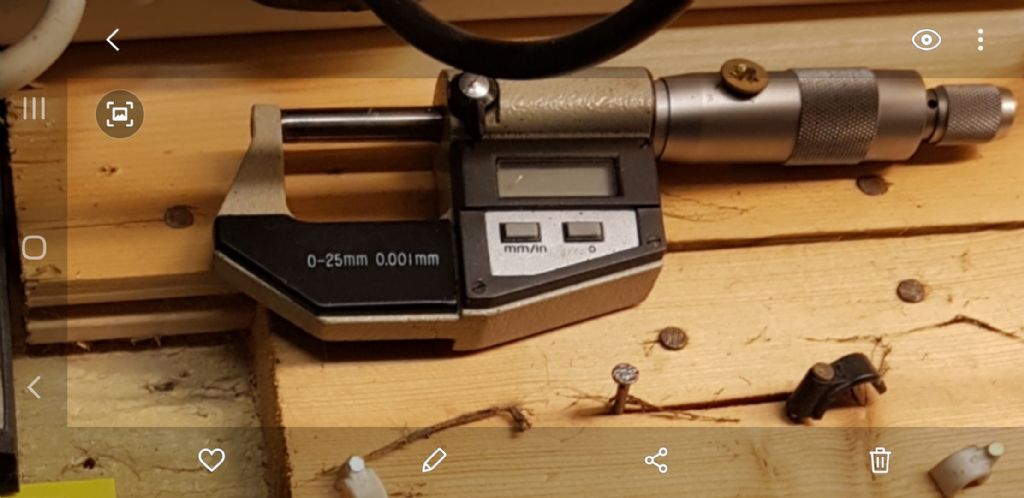This graph puts an interesting perspective on accuracy and the cost of achieving it with various machine tools.

The graph dates from 1991 and doesn't reflect improvements made at the high-accuracy end: it's not unusual for a CNC Machine Centre to do rather better than 0.025mm. Broadly right though.
The cost of accuracy increases linearly up to a 'knee', beyond which the cost multiplies. The graph shows the maximum repeatable accuracy rather than the very best that can be achieved by a skilled operator taking his time and accepting a lot of rejects!
The graph divides in the middle at 0.025mm, which is a thou. 0.025mm sets a boundary between low and high accuracy, and it's about the best that can be expected of Shaping, Planing, Horizontal Boring, Milling machines and Capstan/Turret lathes.
Planing and Shaping are expensive and not very accurate. Although they can be pushed to the 0.025 limit, they perform most economically when less than 0.1mm accuracy is needed. Their high cost compared with milling probably explains why these machines have become unusual. My guess is they are too slow.
Milling gets to 0.1mm fairly easily, but pushing up to 0.025/thou triples the price. It's unlikely that a home-workshop mill can achieve better than 0.025mm accuracy. The same limitation applies to Turret and Capstan lathes: they're good for cheap production and can achieve about the same accuracy as a mill.
High-accuracy requires grinding, including honing, lapping, and hand-lapping. Precision grinding is rare in a home workshop, but industry use it on a huge scale.
Lathe performance as shown on the graph is interesting because it straddles the 0.025mm boundary, getting to about 0.02mm/0.0008" before the knee kicks in, with a practical limit of about 0.013mm/0.0005". Lathes are good performers, capable of reasonable accuracy without costing a fortune. Likewise, milling machines are attractive – reasonable accuracy at low cost. Model engineers don't do much precision grinding because the machines and process is relatively expensive.
That 0.025mm boundary is important in the context of micrometers because it pretty much defines the practical accuracy to which we work. It's about a thou, and doing better than ±0.0005" is really hard. I doubt many home workshops are capable of it, whatever micrometer they have.
Most of us use a different technique I think? I 'fit' parts together, using one to gauge the other, without worrying about exact dimensions. For example rather than bore an accurate 20mm hole and turn a 19.97mm shaft to fit it, I bore a hole of about 20mm, and turn the shaft to slide comfortably into it. No need for a micrometer of any sort, let alone one that does tenths! Fitting is too slow and expensive for production work and spares need to be interchangeable but I don't care!
Does anyone really apply the American System of Manufacturing at home?
Dave
Edited By SillyOldDuffer on 05/12/2021 17:47:21
Neil Lickfold.




 purchased from Harbour Freight, this was great to use, verry accurate, but failed after a couple of years. If I was to replace it I'd go for a good brand (read expensive) as the cheap ones seem throaway items or at least a bit of a lottery when it comes to service life. I have one good vernier caliper (Japanese) and two digital calipers,fine for some less demanding jobs and a dial caliper. the digital calipers are great fot estimating cuts, I set the required dimension, set to zere, measure the item and can see the depth of cut required, very handy, but I always check with a conventional mic for the final cut and checks. Works for me!
purchased from Harbour Freight, this was great to use, verry accurate, but failed after a couple of years. If I was to replace it I'd go for a good brand (read expensive) as the cheap ones seem throaway items or at least a bit of a lottery when it comes to service life. I have one good vernier caliper (Japanese) and two digital calipers,fine for some less demanding jobs and a dial caliper. the digital calipers are great fot estimating cuts, I set the required dimension, set to zere, measure the item and can see the depth of cut required, very handy, but I always check with a conventional mic for the final cut and checks. Works for me!




